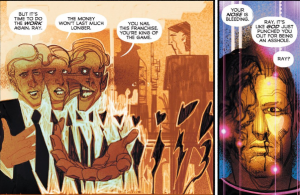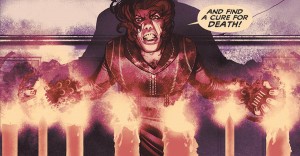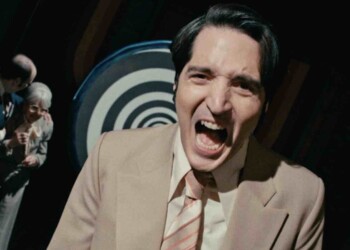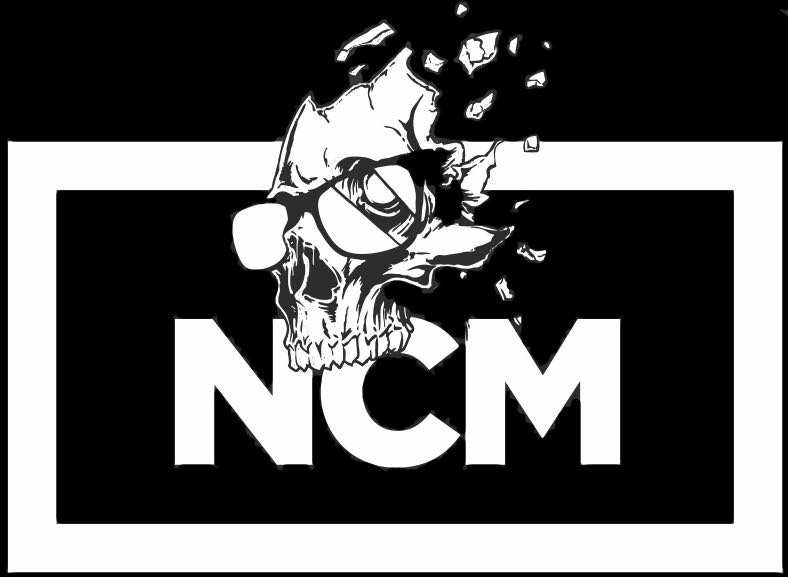Not every new comic book day can be a horn-o-plenty, gushing with copious amounts of delectable, sequential art. Some weeks there just isn’t much to read. Marvel and DC find themselves between events, and the constant beat down of sexy new number ones coming from publishers like Image had to slow down at some point. Rather than force it and try to squeek out an article on an average issue of an okay book, I am going to go back to a book from last week I felt went underread.
Annihilator #1 came out last week to a small, yet enthusiastic, critical response. The latest project from comic book folk-god Grant Morrison, Annihilator finds joy in becoming something different on every page while managing to reflect on its own creation with divine clarity.
The book opens with a bug-headed alien man being chased by some sort of galactic law enforcement officer through a sci fi space setting, but by the time page five is turned the reader is looking at suburban Los Angeles.
Ray Spass is a once famous, and now drug addicted, screen writer who moves into a new Hollywood home notorious for being the scene of well publicized murders. He hopes that moving into the home will help inspire him to finish his latest horror screenplay based around a haunted space station.
The issue is really at its best during the beginning of its second act as we see Spass struggle with the creative process. His screenplay is about an artist in a sci fi world named Max Nomax. Nomax gets himself intentionally exiled to a space station that orbits the black hole at the center of our universe in order to create a piece of art that will show him how to “find a cure for death.”
The concept is obtuse and overly dramatic and it is played as such, but the screenplay’s overdone drama is presented with a purpose.
The fictional Max Nomax’s self-banishment is meant to mirror the very real Ray Spass’s relocation to his notorious new home. It is a clear, yet subtle, representation of how an artist’s life is recreated in their work, often without intention.
As the issue progresses and more of Spass’s life is revealed and represented in Nomax’s story, the reader begins to see a new and beautifully rusted version of the fourth wall.
Part of what vaulted Annihilator’s writer, Grant Morrison, to the highest levels of comic book esteem was the way he played with the creator/character relationship in his Animal Man run. That relationship has manifested itself again in this new series. It is a brilliant and simple look into the creative process.
Spass feels drowned at moments, like he is at the mercy of the story he is tasked to write. He is not a catalyst, but a captive. Abused by unseen muses and grasping desperately in an attempt to gain control of a story he is supposed to be creating. To anyone that has tried to be a writer or artist (especially one working under the burning rays of a deadline) – this will flush you with empathy.
These elements are where the issue is at its most enjoyable, but, like much of Morrison’s less edited works, it can wander and lose itself in a slightly peyote-esque obscurity, and the message can get foggy in an overly aggressive attempt to be shocking.
Spass’s ventures into orgies and empty Satanic gestures are meant to be representations of his attempts to inspire the horror elements of his writing, but they come off as needlessly vestigial and fatty. The brilliant second act of the issue is dragged down by this, but it rebounds hard when it returns to the author/character dynamic in the closing pages.
Every new number one is really just a set up and tease for a longer ongoing narrative and the final page cliffhanger of Annihilator #1 sets up a dynamic that the rest of the issue did not advertise. When viewed in the context of a longer story, this is an intriguing and thoughtfully put together prelude, but many number ones are. It is their nature.
Why Annihilator #1 is special for a #1 is that it’s more than a flirtation. It is a dissection of itself. It is a book about creating a story that is also creating you. If this was a one shot it would have left me completely satisfied. The fact that the ideas here are only an appetizer and not a meal is beyond enticing; most books could not so completely realize complex concepts like these over entire series’, let alone a pilot episode. This is just the beginning and we have already journeyed to the center of the universe while disassembling the concept of art. I can’t begin to image where we’re going next.








